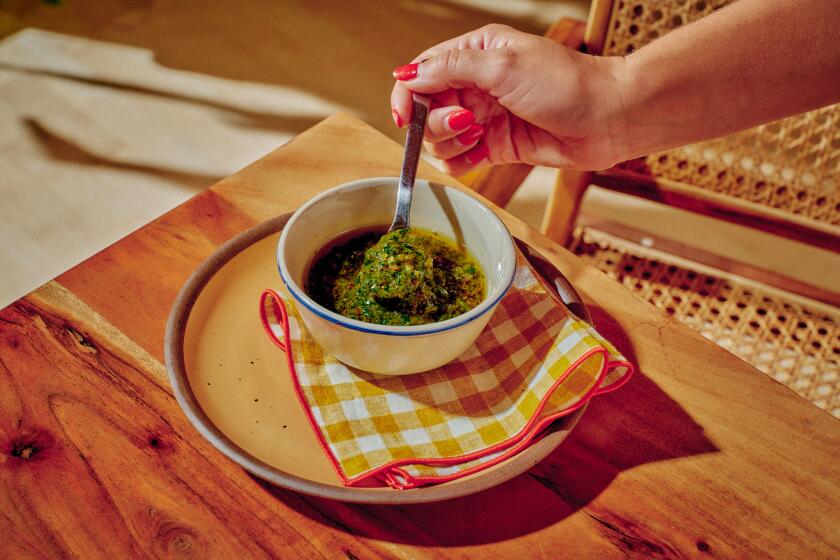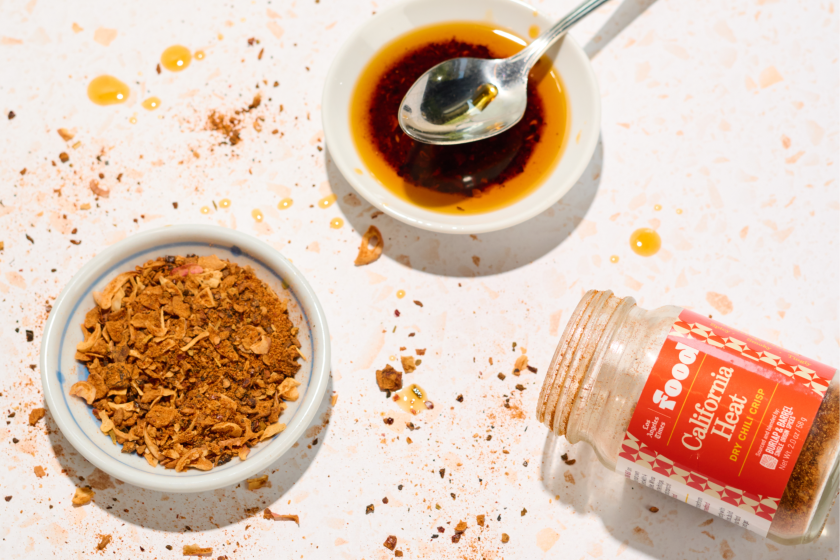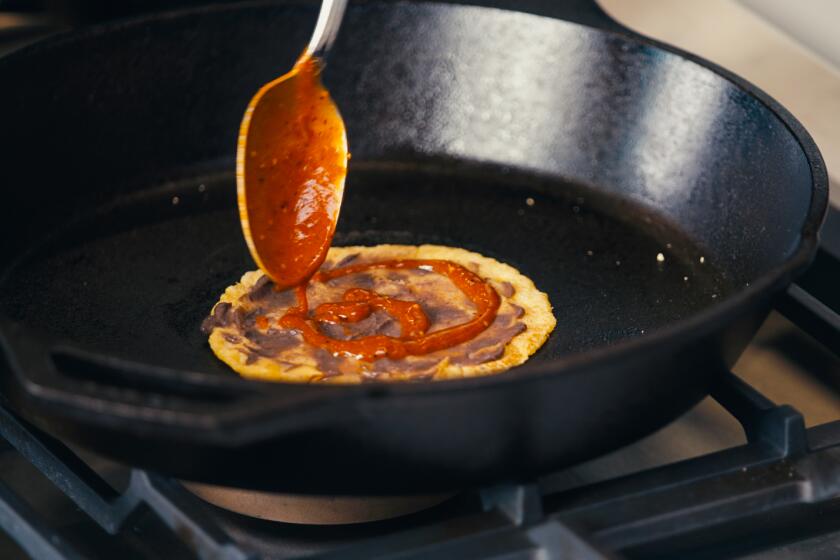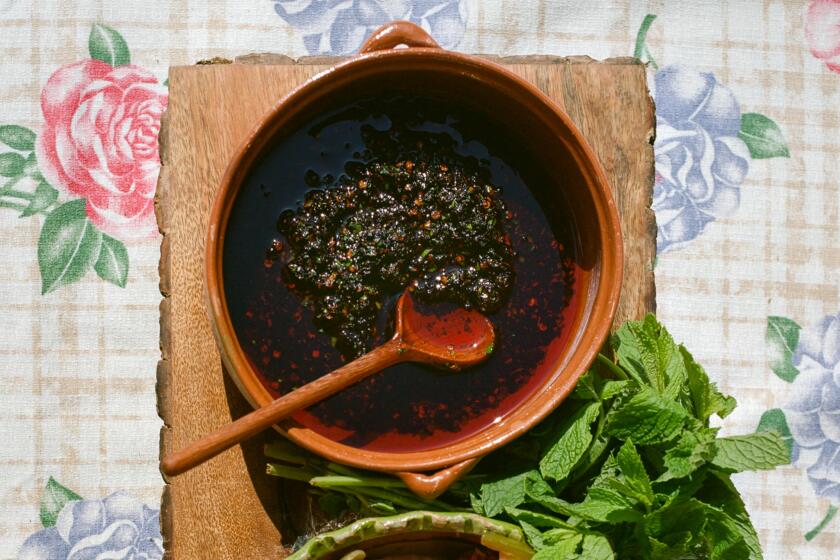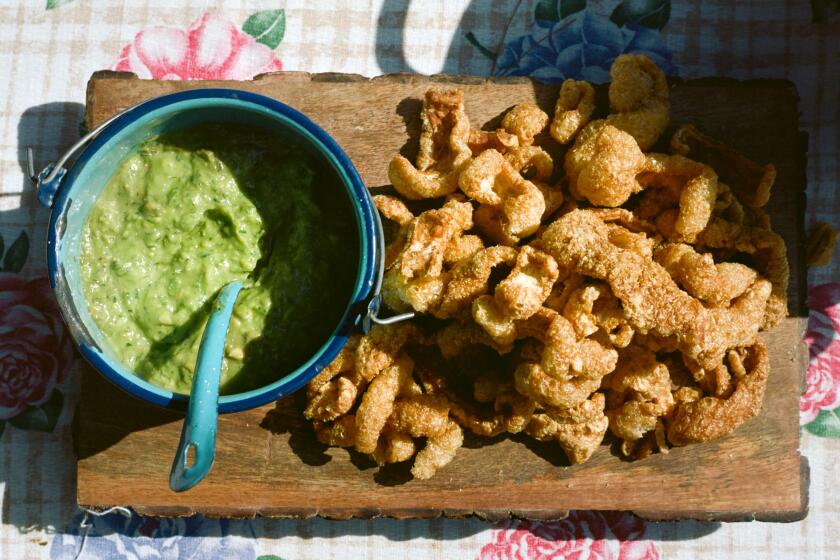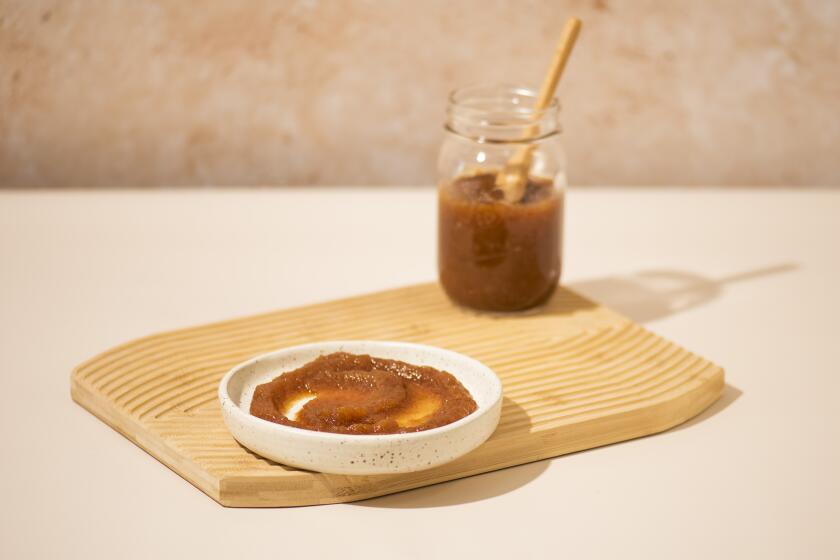Cherry-almond filling
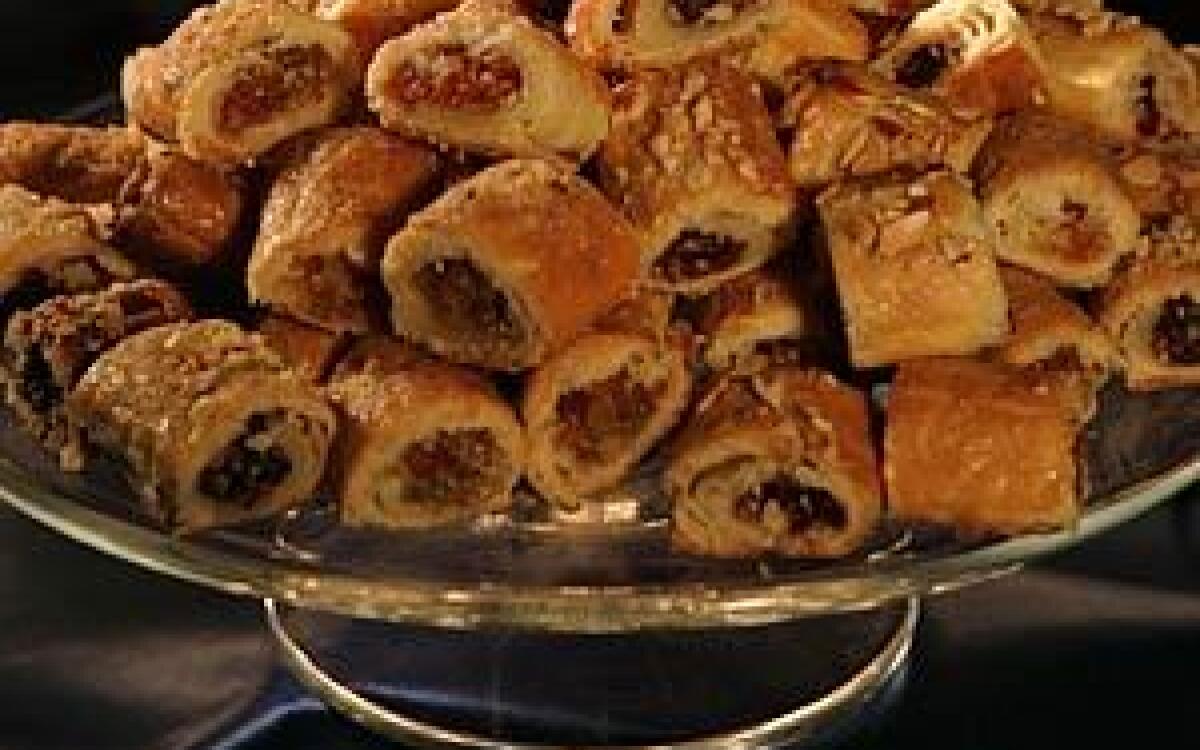
- Share via
Anyone who thinks celebrating Hannukkah properly involves getting out a frying pan can think again.
Yes, potato latkes are wonderful. And yes, jelly doughnuts, which have become traditional for the holiday too, are superb. But before there were doughnuts or latkes, there was cheesecake.
No, we’re not going to suggest cheesecake this Hanukkah, though that would be absolutely in line with tradition. As Joan Nathan reminds us in her “Jewish Holiday Cookbook,” cheesecake was essential in the Hanukkah story: Judith gave cheesecakes to Assyria’s Gen. Holofernes, which made him thirsty, so she gave him wine, which made him swoon and she was then able to slay him, saving the Jews.
“They weren’t sweet cheesecakes; they were savory,” explains Nathan by phone from her Washington, D.C., home.
In any case, Judith’s cheesecake is why rugelach, the wonderful little cookies-cum-mini-coffee cakes that have cream cheese in the dough and are rolled up with fillings made of any combination of nuts, dried fruits, preserves, spices and chocolate, have come to be traditional for Hanukkah.
Short of coming up with a delicious savory cheesecake, nothing could be more true to the spirit of the holiday than rugelach. Not even potato latkes. (Potatoes didn’t travel from the New World to the Old World until the 1550s.)
Rugelach weren’t always associated with Hanukkah, though, because the pastries didn’t always include cheese. “Rugelach have always been made in Eastern Europe,” Nathan says. “There might have been some that were buttery, but most were made with a yeast dough rolled out very thin.”
In the 19th century, immigrants brought rugelach to America, and the cream cheese innovation, Nathan says, may have come courtesy of the Philadelphia cream cheese company, around the time the product was launched in 1890.
“They had to make up recipes with their products, and they saw the Jewish customers were really receptive.” One of those recipes may have been for rugelach made with cream cheese dough.
Who knew? And further, who knew that the word rugelach comes from the Yiddish rugel, which means “wrinkle”? (Perhaps that comes from the Latin ruga, also meaning wrinkle.) So rugelach means “wrinkles” or “folds,” which makes sense because they’re rolled up in a wrinkly, folded sort of way.
When I was growing up, my grandmother baked decent rugelach when she came to visit. Otherwise, it came in a pink box from Viktor Benes. That was fine, but I always dreamed of finding a recipe for homemade rugelach to die for. I dreamed, for this Hanukkah, of rugelach filled with the best dark chocolate and maybe hazelnuts, or wonderful dried cherries and the freshest almonds. I asked Donna Deane, The Times’ test kitchen director, to make my holiday dreams come true, and she did, creating recipes for three of the most amazing rugelach I could have imagined.
Choose one or two of the fillings, make a batch of the dough, and let ‘em roll.
Toast the almonds in a 350-degree oven until lightly browned, about 8 minutes. Remove the nuts from the oven and let cool to room temperature. When the almonds have cooled, chop them. Set aside 1 tablespoon for sprinkling on top of the cookies.
In a small bowl, combine the remaining chopped almonds, the cherries, coconut, lemon zest and brown sugar.
Get our Cooking newsletter.
Your roundup of inspiring recipes and kitchen tricks.
You may occasionally receive promotional content from the Los Angeles Times.










